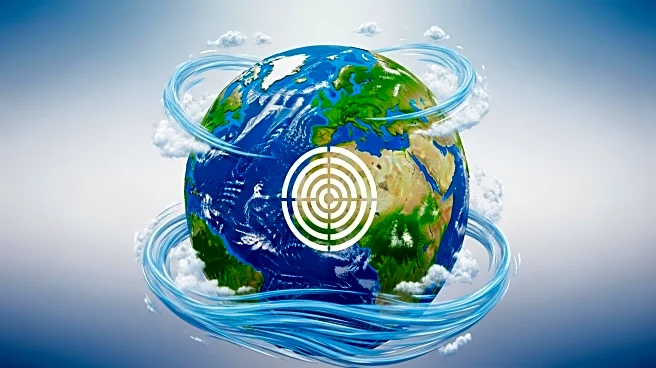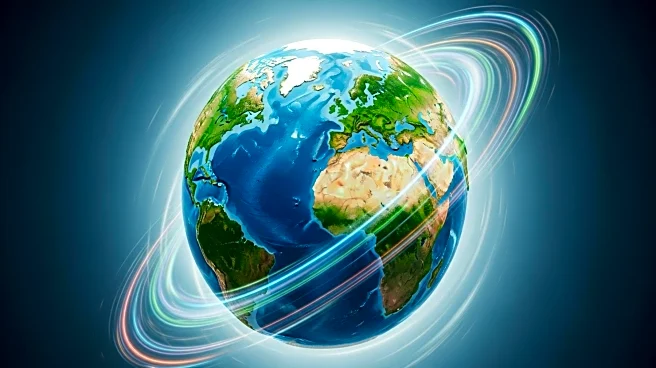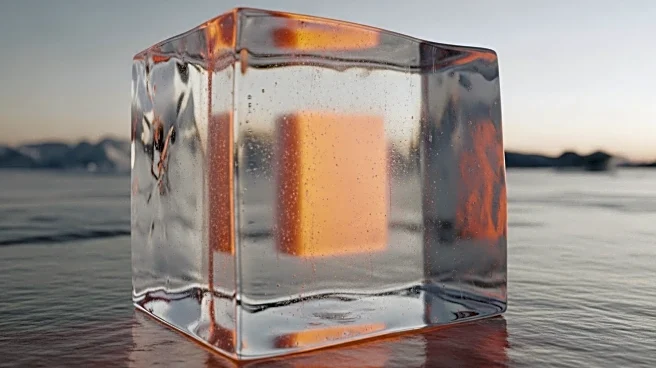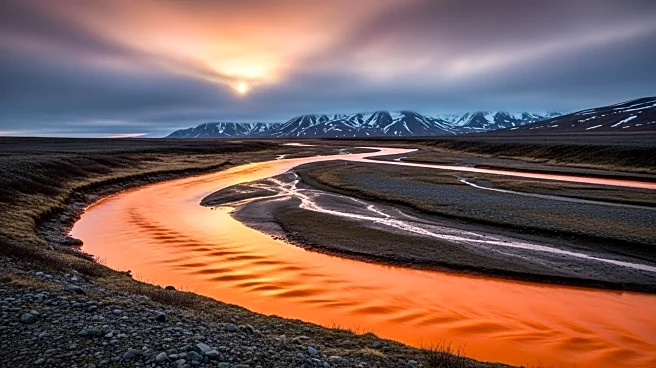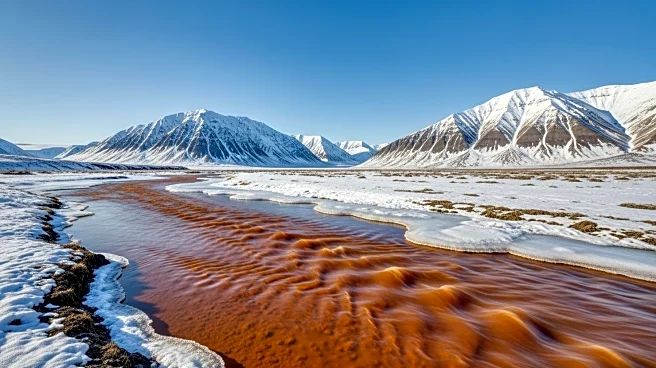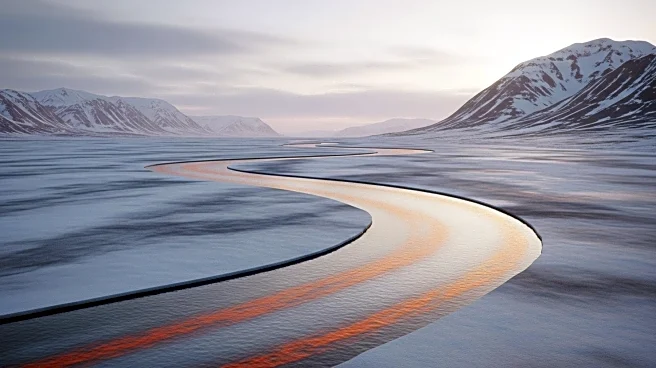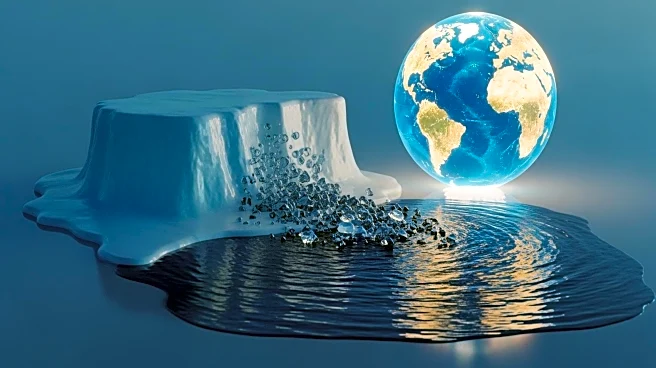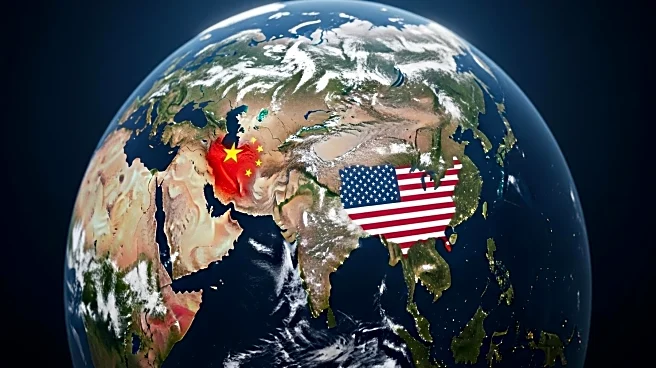What's Happening?
Recent research has revealed that ice plays a significant role in the chemical reactions causing Arctic rivers to turn orange. A study published in the journal PNAS highlights that ice can dissolve iron minerals more effectively than liquid water, contributing to the discoloration of rivers as the planet warms. Jean-François Boily, a chemist at Umeå University, and his team found that ice at temperatures as low as minus 30 degrees Celsius can act as a chemical reactor, concentrating compounds and facilitating reactions with iron minerals. This process is intensified by freeze-thaw cycles, which release iron from soils and permafrost into the water, potentially affecting water quality and aquatic ecosystems.
Why It's Important?
The findings underscore the active role of ice in environmental chemical processes, challenging the traditional view of ice as a passive element. As climate change increases the frequency of freeze-thaw cycles, the release of iron into Arctic waters could have significant ecological impacts, affecting water quality and aquatic life. This research highlights the need for further investigation into the environmental consequences of ice-related chemical reactions, particularly in the context of global warming and its effects on natural ecosystems.
What's Next?
Researchers are continuing to explore whether these findings apply to all ice containing iron, which could broaden the understanding of ice's role in environmental chemistry. The study's implications for other acidic environments, such as mine drainage sites and acid sulfate soils, suggest that similar processes may be occurring elsewhere, warranting further study. As climate change progresses, monitoring and understanding these chemical interactions will be crucial for predicting and mitigating their impacts on ecosystems.
Beyond the Headlines
This research highlights the complex interplay between climate change and natural chemical processes, emphasizing the need for a nuanced understanding of environmental changes. The study also raises questions about the long-term effects of increased iron release on Arctic ecosystems and the potential for similar processes in other cold regions. As scientists continue to investigate these phenomena, the findings could inform policy decisions and conservation efforts aimed at preserving vulnerable ecosystems.

